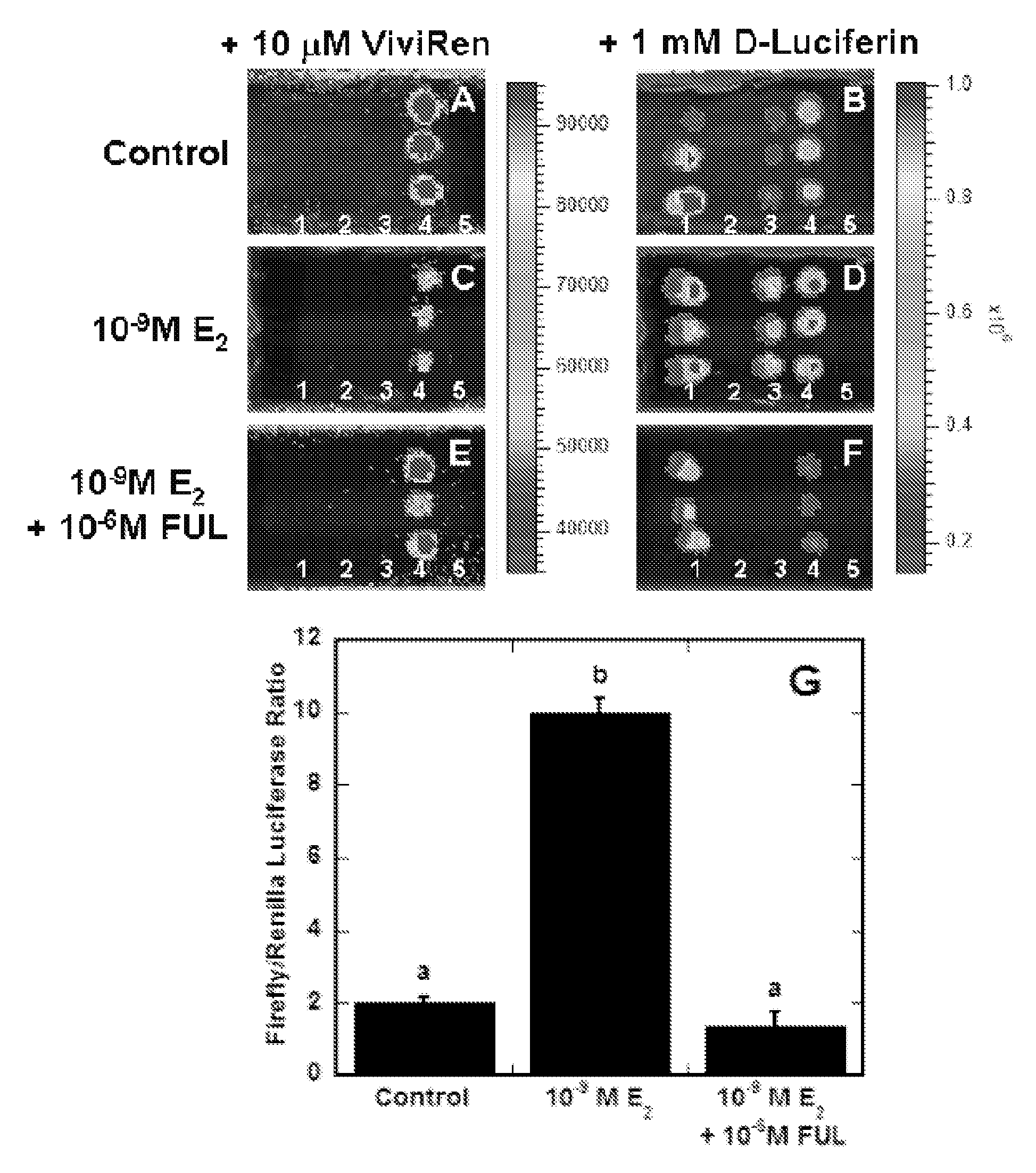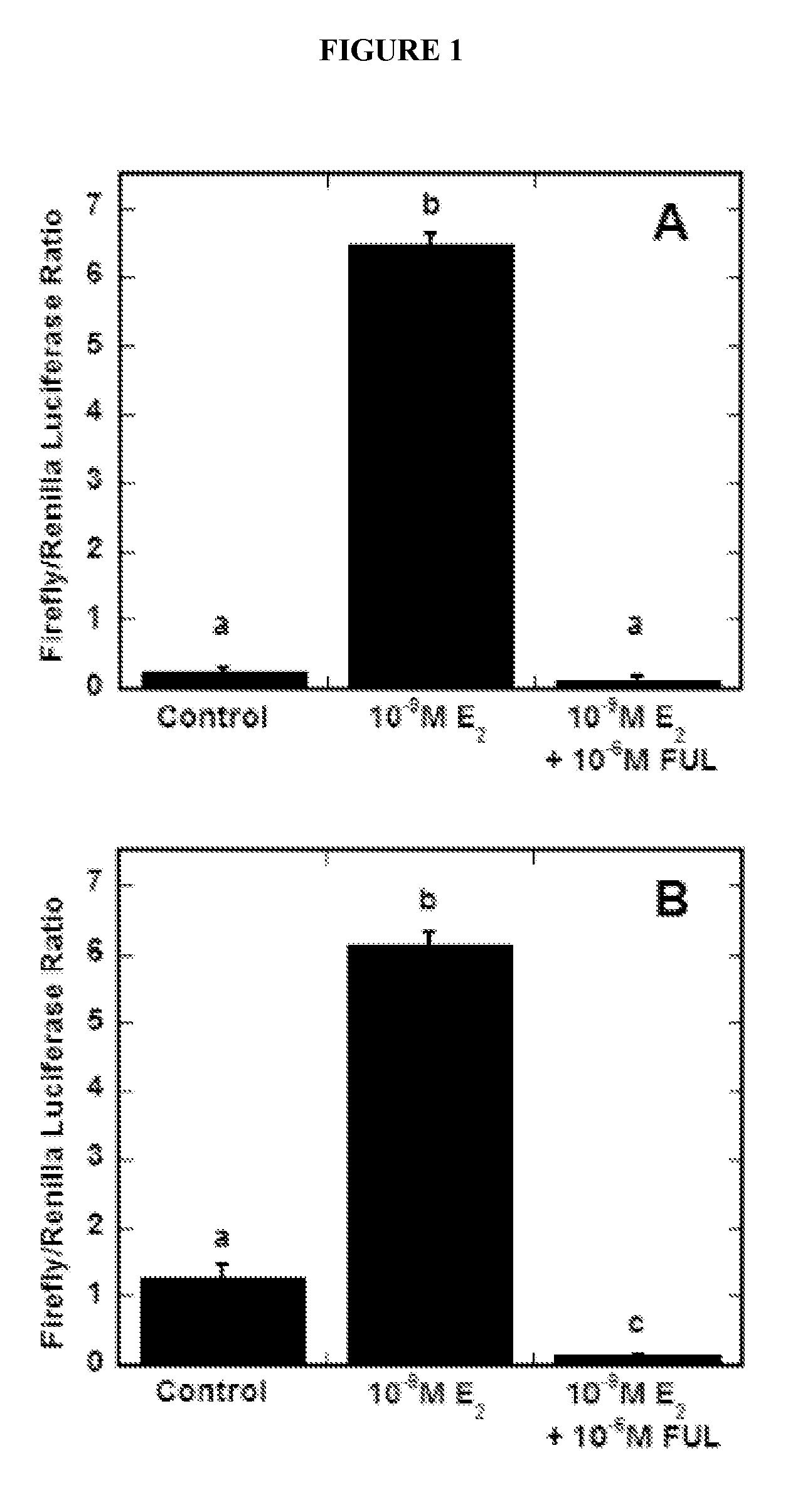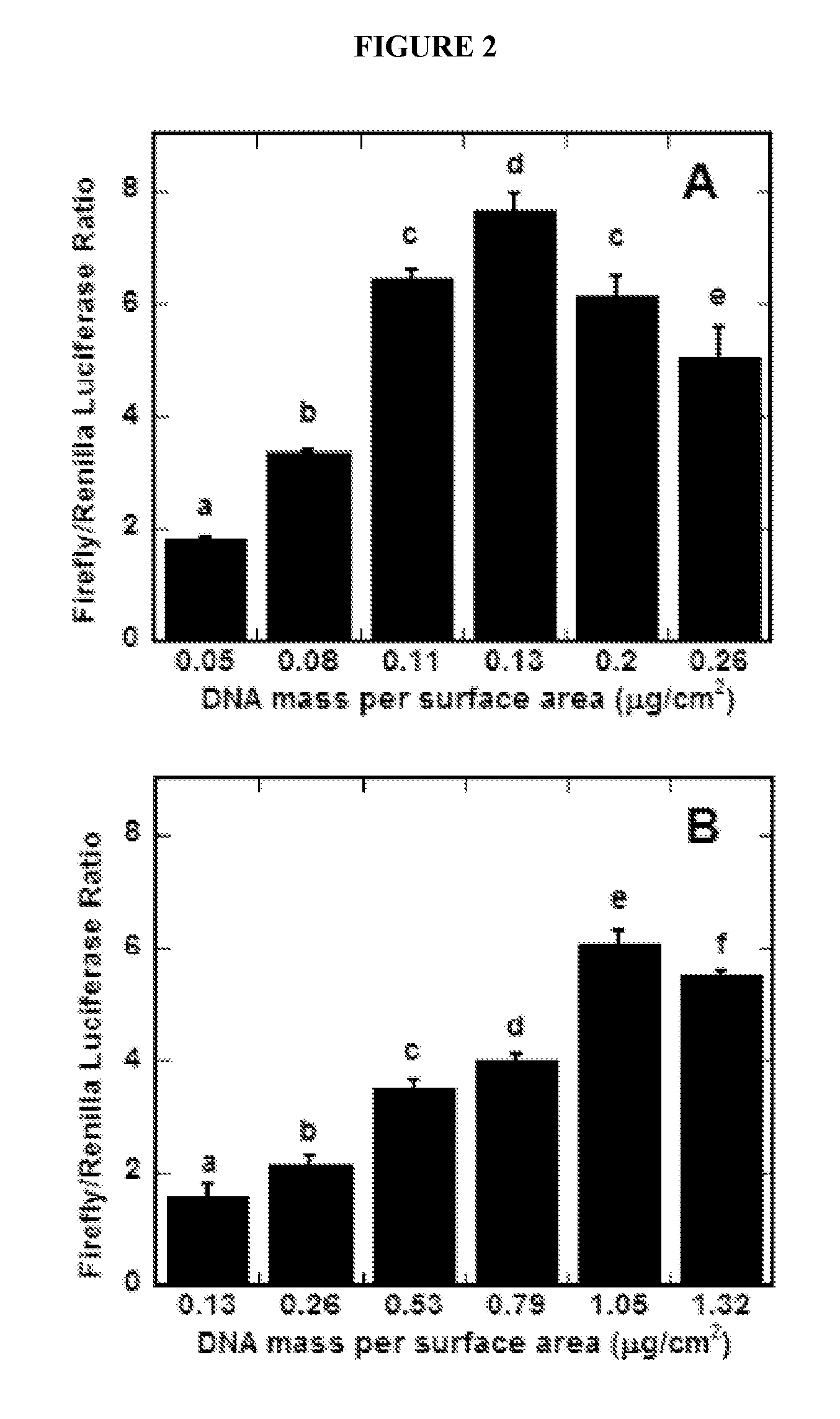Cellular Arrays
a technology of cellular arrays and cells, applied in the field of cell arrays, to achieve the effect of higher induction
- Summary
- Abstract
- Description
- Claims
- Application Information
AI Technical Summary
Benefits of technology
Problems solved by technology
Method used
Image
Examples
example 1
Lithographic Methods and Materials for Generating Transfection Cell Arrays
[0265]Cells. Estrogen receptor (ER)-positive MCF-7 / WS8 mammary carcinoma cells, clonally derived from MCF-7 cells by selection for sensitivity to growth simulation by 17-β-estradiol (E2) (See, e.g., Jiang et al., 1992. Mol Cell Endocrinol 90(1):77-86′ Levenson and Jordan, 1997. Cancer Res 57(15):3071-8), were utilized. Cells were cultured in fully estrogenized, phenol red-containing RPMI-1640 media supplemented with 10% fetal bovine serum (FBS), 100 μM non-essential amino acids, 100 units antibiotic / antimycotic, 2 mM L-glutamine, and 6 ng / ml insulin and maintained at 37° C. in a humidified 5% CO2 atmosphere. Prior to transfecting cells for an experiment, cells were cultured under estrogen-free conditions by substituting phenol red-free RPMI-1640 and dextran-coated charcoal-treated fetal bovine serum in the medium. For experiments in which transfected cells were assayed in 24-well plates using a luminometer, or...
example 2
Multiwell Dish Format Estrogen Responsive Element (ERE)-Reporter Gene Induction Studies
[0278]Multiwell dish format reporter gene assays were performed to compare estrogen receptor-alpha (Erα)-regulated, estrogen response element (ERE)-dependent transcriptional activity in MCF-7 cells transfected via surface-mediated delivery of DNA complexes in comparison to traditional bolus delivery (See FIG. 1). DNA complexes formed using an E2-responsive firefly luciferase reporter plasmid pERE(3×)TK-ffLUC and a normalization plasmid pTK-rLUC encoding renilla luciferase were delivered to cells via bolus or surface delivery. Transfected cells were treated with various combinations of the agonist E2, the complete antiestrogen FUL, or ethanol. Surface delivery of the plasmids (See FIG. 1B) resulted in E2-stimulated responses similar to bolus delivery (See FIG. 1A), with E2 statistically inducing firefly luciferase expression 6-7 fold (p2. Further, the maximal induction of reporter gene activity was...
example 3
Array Fabrication and Verification
[0282]An array was created using soft lithography techniques to pattern DNA-lipid complex deposition and subsequent transfection upon cell seeding (See FIG. 4). Briefly, a polydimethylsiloxane (PDMS) mold with microwells (e.g., generated as described in Example 1) (See FIG. 4A) was reversibly sealed to polystyrene microscope slides (See FIG. 4B) with the microwells serving as reservoirs for deposition of DNA complexes onto the polystyrene slide (See FIG. 4C). Rhodamine-labeled DNA complexes deposited within microwells were immobilized to the slide in distinct regions, replicating the pattern of microwells in the PDMS mold (See FIG. 4D-F). Transfection of MCF-7 cells seeded onto arrays of complexes was determined by GFP expression, and was also confined to the patterns (See FIG. 4G-I).
PUM
| Property | Measurement | Unit |
|---|---|---|
| concentration | aaaaa | aaaaa |
| concentration | aaaaa | aaaaa |
| concentration | aaaaa | aaaaa |
Abstract
Description
Claims
Application Information
 Login to View More
Login to View More - R&D
- Intellectual Property
- Life Sciences
- Materials
- Tech Scout
- Unparalleled Data Quality
- Higher Quality Content
- 60% Fewer Hallucinations
Browse by: Latest US Patents, China's latest patents, Technical Efficacy Thesaurus, Application Domain, Technology Topic, Popular Technical Reports.
© 2025 PatSnap. All rights reserved.Legal|Privacy policy|Modern Slavery Act Transparency Statement|Sitemap|About US| Contact US: help@patsnap.com



